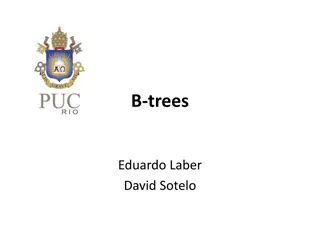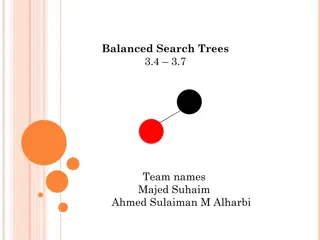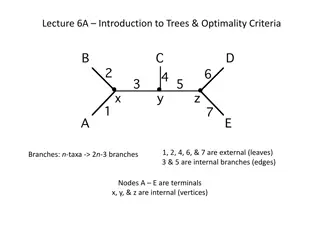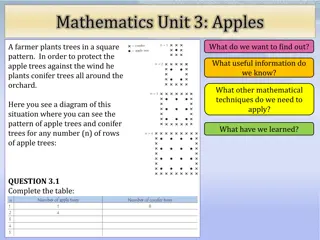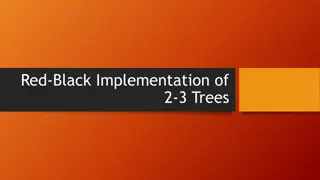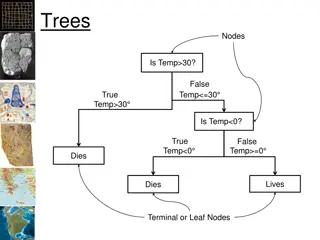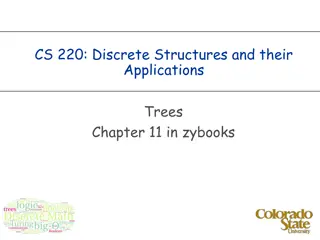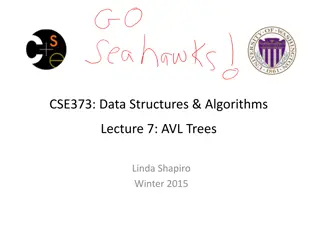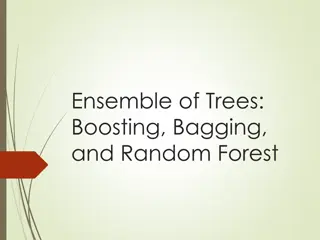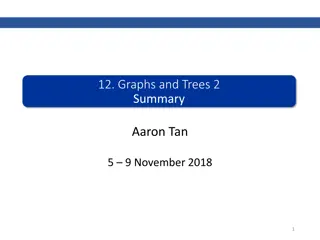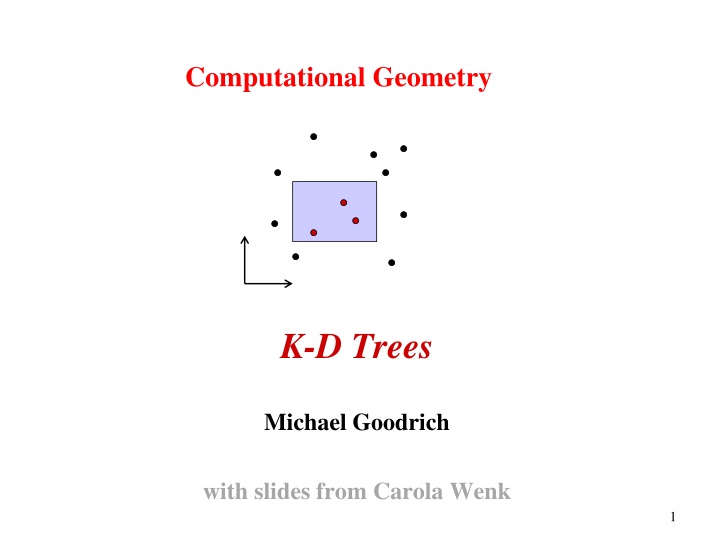
Understanding Orthogonal Range Searching with KD-Trees
Delve into the world of computational geometry with K-D Trees explained by Michael Goodrich with slides from Carola Wenk. Learn about orthogonal range searching, build KD trees, and analyze their construction for efficient query performance in multidimensional spaces.
Download Presentation

Please find below an Image/Link to download the presentation.
The content on the website is provided AS IS for your information and personal use only. It may not be sold, licensed, or shared on other websites without obtaining consent from the author. If you encounter any issues during the download, it is possible that the publisher has removed the file from their server.
You are allowed to download the files provided on this website for personal or commercial use, subject to the condition that they are used lawfully. All files are the property of their respective owners.
The content on the website is provided AS IS for your information and personal use only. It may not be sold, licensed, or shared on other websites without obtaining consent from the author.
E N D
Presentation Transcript
Computational Geometry K-D Trees Michael Goodrich with slides from Carola Wenk 1
Orthogonal range searching Input: A set P of n points in d dimensions Task: Process P into a data structure that allows fast orthogonal range queries. Given an axis-aligned box (in 2D, a rectangle) Report on the points inside the box: Are there any points? How many are there? List the points. 2
Orthogonal range searching: KD-trees Let us start in 2D: Input: A set P of n points in 2 dimensions Task: Process P into a data structure that allows fast 2D orthogonal range queries: Report all points in P that lie in the query rectangle [x,x ] [y,y ] y' y x' x 3
KD trees Idea: Recursively split P into two sets of the same size, alternatingly along a vertical or horizontal line through the median in x- or y-coordinates. l1 l5 {p1, p2, p3, p4,p5} {p6, p7, p8, p9,p10} l1 l7 l2 l3 p4 p9 p5 {p4,p5} {p6, p7, p8} {p9,p10} {p1, p2, p3} p10 l4 l5 l6 l7 l2 l8 l3 p2 {p6, p7} {p1, p2} p7 l8 p3 p4 p1 l9 p5 p8 p8 p9 p10 p3 l9 p6 p1 p7 p2 p6 l6 l4 4
BuildKDTree Idea: Recursively split P into two sets of the same size, alternatingly along a vertical or horizontal line through the median in x- or y-coordinates. l5 l1 l7 p4 p9 p5 p10 l2 l8 l3 p2 p7 p1 p8 p3 l9 p6 l6 l4 l1 l2 l3 l4 l5 l6 l7 l8 p3 p4 l9 p5 p8 p9 p10 p6 p1 p7 p2 5
BuildKDTree Analysis Sort P separately by x- and y-coordinate in advance Use these two sorted lists to find the median Pass sorted lists into the recursive calls Runtime: ? 1 ,? = 1 ? 2 ? ? = ? ? + 2? ,? > 1 = ?(?log?) Storage: O(n), because binary tree on n leaves, and each internal node has two children. 6
Regions l1 l5 l1 l7 p4 l2 l3 p9 p5 p10 l2 l4 l5 l6 l7 l3 p2 p7 l8 p1 p8 =v l8 p4 p3 l9 p5 p8 p9 p10 p3 l9 p6 p6 p1 p7 p2 l6 l4 region(v) lc(v)=left_child(v) region(lc(v)) = region(v) l(v)left Can be computed on the fly in constant time 7
l1 SearchKDTree l2 l3 l4 l5 l7 l6 l8 p3 l9 p5 p4 p9 p8 p10 p6 p1 l10 p2 l11 l12 l5 l1 l7 p11 p12 p7 p13 p4 p9 p5 p10 l2 p7 l3 p2 p13 l8 How many nodes does a search touch? l11 p1 p8 l12 p11 p12 p3 l10 p6 l9 l6 l4 8
SearchKDTree Analysis Theorem: A kd-tree for a set of n points in the plane can be constructed in O(n log n) time and uses O(n) space. A rectangular range query can be answered in ? time, where k = # reported points. (Generalization to d dimensions: Also O(n log n) construction time and O(n) space, but ?(?1 1 time.) ? + ? ?+ ?) query 9
SearchKDTree Analysis Proof Sketch: Sum of # visited vertices in ReportSubtree is O(k) # visited vertices that are not in one of the reported subtrees = O(# regions(v) intersected by a query line) Consider intersections with a vertical line only. Let Q(n) = # intersected regions in kd-tree of n points whose root contains a vertical splitting line Q(n) = 2 + 2Q(n/4), for n>1 Q(n) = O( ?) l3 l1 l1 l2 l2 l3 l4 l4 10
Summary Orthogonal Range Searching Range trees Query time: O(k + logd-1n) to report k points (uses fractional cascading in the last dimension) Space: O(n logd 1n) Preprocessing time: O(n logd 1n) KD-trees Query time:?(?1 1 Space: O(n) Preprocessing time: O(n log n) ?+ ?) to report k points 11


